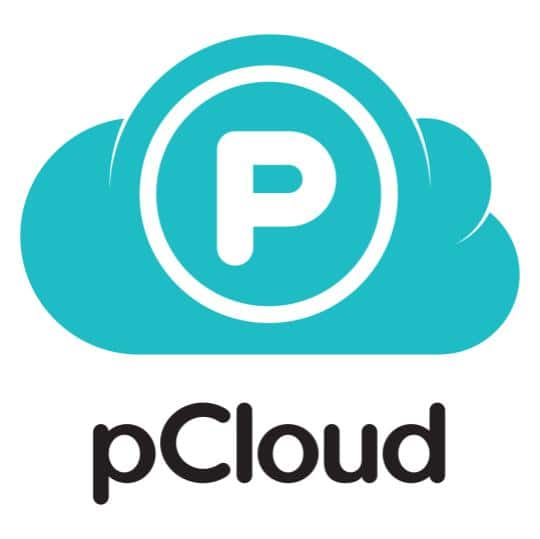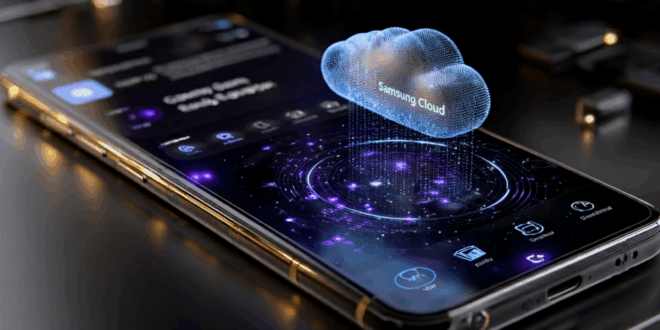Samsung Cloud has redefined its role by focusing on system backup for your Galaxy device. However, its established partnership with Microsoft OneDrive for photos and videos may soon come to an end.
Cloud storage is increasingly utilized by smartphone users, effectively addressing the ongoing challenge of internal storage space. Historically, Samsung has been a pioneer in offering its own solution, Samsung Cloud, which is exclusively compatible with its Galaxy device line.
However, the digital ecosystem has evolved, bringing changes to the very nature of this service. If your understanding of Samsung Cloud is limited to the backup of photos and videos, it’s time for a crucial update.
Today, the service has redefined its purpose. It now focuses on vital system data. Multimedia, on the other hand, has found a new home: Microsoft OneDrive. Understanding this transition is essential for any Galaxy smartphone or tablet owner, as it ensures an optimal and secure backup of essential data, particularly sensitive information.
Enjoy 2 TB of lifetime online storage with pCloud

Samsung Cloud: What Role Does It Really Play in the Galaxy Ecosystem?
Launched alongside the Galaxy Note 7, Samsung Cloud has never been just a raw file storage space. Initially designed to provide a homegrown alternative to the major cloud storage solutions, it has always been deeply integrated into Samsung’s operating system.
Its current utility focuses on the digital DNA of your device: the settings. Unlike generalist services, Samsung Cloud excels at capturing all the settings, from display preferences to notification sounds, including the layout of your home screen.
It’s no longer about storing your bulky photo galleries; it’s about remembering the exact configuration of your phone. The goal is to ease the transition when changing smartphones. Imagine being able to restore all your shortcuts, alarms, and even your keyboard settings on a new device effortlessly. That’s the promise kept by Samsung Cloud.
This service also maintains continuous syncing of textual data and contacts. Your messages (SMS/MMS), call log, saved contacts, and calendar entries are automatically and regularly backed up to the cloud.
This feature has often been underestimated. However, it serves as a lifesaver in case of loss, theft, or irreversible damage to your device. By creating a Samsung account, you activate this implicit protection.
The service ensures the resilience of the most sensitive personal information that, while less hefty than multimedia files, are irreplaceable. It’s this specialization in system backup that has allowed Samsung Cloud to survive and evolve, even after the major partnership with Microsoft.
The Crucial Evolution: Photos and Videos, A Migration Far from Being Final
This is the most important point to note for anyone who used Samsung Cloud for their visual memories. For several years, following a strategic agreement, Samsung discontinued the support for gallery storage (photos and videos) on its service. It transferred this function to Microsoft OneDrive. This decision proved pragmatic. Rather than competing with major players in pure storage, Samsung chose to ally with one of them.
This transition allowed Galaxy users to link their native Gallery to OneDrive. The photos and videos captured were then automatically synced to provide a s seamless software integration.
Moreover, users typically enjoyed a higher storage capacity. This is especially true for those who already had an Microsoft 365 subscription, which includes 1 TB of OneDrive storage. For the user, this experience was coherent. In other words, consultation took place via the Gallery app, but data was secured through the OneDrive ecosystem.
However, this historic arrangement may be coming to an end. Recent analyses of the Gallery app’s code (via OneUI 8.5 updates) have revealed clear messages. These suggest the imminent end of native syncing with OneDrive.
Samsung seems ready to bring the backup of photos and videos back to its own service, Samsung Cloud. This shift would mark the company’s intention to adopt Apple’s model to lock in its ecosystem even more. Users will need to keep a close eye on device notifications to ensure that their precious data continues to be secured during this potential change of course.
Access to Samsung Cloud: Simplicity and Broad Device Compatibility
Accessing Samsung Cloud management is designed to be intuitive and straightforward, integrated into the very heart of the Galaxy user experience. To check saved data or modify syncing settings, simply navigate to the “Settings” app on your smartphone or tablet.
The relevant section may vary slightly depending on the Android version, but is generally found under “Accounts and backup” or “Cloud and accounts”. It’s in this exact spot that you manage your Samsung account. It’s also where you activate or deactivate automatic backups for various supported elements, including call logs, messages, contacts, etc.
Regarding compatible devices, Samsung Cloud supports the vast majority of Samsung Galaxy smartphones and tablets running a recent version of Android.
Integration is assured across all Galaxy devices. This includes flagship models like the current Galaxy S series. The service also supports foldable devices (Z Fold or Z Flip). Even the more budget-friendly models from the A series benefit from this integration.
The only fundamental prerequisite is to have an active Samsung account, which serves as a key for access and identification for all integrated services from the brand. This broad compatibility is a strong point, confirming that Samsung Cloud is an indispensable service. It is a standard and reliable component of the Galaxy experience, regardless of your device’s range.
Enjoy 2 TB of lifetime online storage with pCloud

Beyond the Cloud: The Evolution of Internal Storage and MicroSD
The rapid evolution of smartphone storage has changed the game. The maximum internal capacity is no longer 256 GB; this figure is now the bare minimum for some segments. Current high-end models commonly offer options of 512 GB and 1 TB. This explosion in capacities has certainly reduced immediate reliance on the cloud for storing large files. However, it has not eliminated the fundamental need for data backup and synchronization.
Similarly, the use of microSD cards has changed drastically. They represent a viable option for extending memory, particularly on mid-range devices that still have the dedicated port.
Indeed, the cost of the cards has dropped significantly. 128 GB microSD cards have become very affordable. Cards of 512 GB or even 1 TB are readily accessible, providing a massive local storage solution for those who prefer to keep large amounts of data out of the cloud.
Despite these advancements, Samsung Cloud retains a crucial advantage. It still ensures data security in case of hardware loss and ease of multi-device access. These aspects cannot be matched by any microSD card, no matter how fast or capacious. The cloud thus remains the ultimate solution for digital resilience.
Unique Features of Samsung Cloud: More than Just a Backup
Even with the migration of photos to OneDrive, Samsung Cloud retains features that set it apart from general cloud services. The “backup and restore” function without a USB cable is particularly powerful and user-friendly. It reinstalls the user environment. In addition to contacts and settings, the service manages the backup of essential data from important native applications such as Notes, as well as data from some third-party apps.
One of the much-appreciated features is its ability to back up the entire home screen. This includes the wallpaper, the exact position of every icon, folder, and widget.
This attention to detail means that after restoration on a new device, the user regains a familiar and immediately operational interface. This eliminates the frustration of having to reorganize everything manually.
Of course, the backup of third-party app data has seen some adjustments. However, Samsung Cloud draws much of its undeniable strength from the backup of the user’s “profile”. It is the tool that facilitates retention and transition within the Samsung ecosystem.
Optimizing Galaxy Backup: Linking Samsung Cloud and Microsoft OneDrive
For a Galaxy user, optimizing backup now requires a two-tiered strategy. The secret to successful digital protection is thus the combined use of Samsung Cloud and Microsoft OneDrive.
Samsung Cloud (System Specialist)
You should ensure that all options for automatic backups of system data are enabled in the settings. This concerns logs, SMS, calendar, and especially settings and home screen layout. This service often operates in the background without you needing to think about it.
Microsoft OneDrive (Media Specialist)
The Samsung Gallery must be properly linked to your OneDrive account. This ensures that every photo and video taken is instantly secured. You should check OneDrive’s pricing options if the 5 GB free space is insufficient. Plans are generally very competitive, especially with a Microsoft 365 subscription. This provides massive storage capacities suitable for modern photographic needs.
By combining these two services, Galaxy users benefit from a comprehensive and resilient backup solution. In fact, this approach covers both vital system data (via Samsung Cloud) and large multimedia files (via OneDrive).
Marketing Importance: Direct Communication via SMS Marketing Campaign
The role that mobile communication plays in the customer relationship for technology companies also deserves particular attention. Direct communication channels are crucial. They are used, for example, to announce a service migration like that of Samsung Cloud to OneDrive. They are equally effective for promoting a new phone model. The SMS marketing campaign is thus a proven tool for reaching a broad audience instantly.
The fact is that 90% of the population owns a mobile phone, and smartphone owners check their devices dozens of times a day. This makes SMS a remarkably effective advertising vector. With a read rate approaching 98%, it far exceeds that of email. As a result, important messages and alerts about promotions or service information are easily accessible.
For a company like Samsung, leveraging this marketing channel allows for rapid notification of major service changes to its user base. This ensures a smoother transition to new solutions like OneDrive integration. It’s a channel that complements technological offerings while maintaining direct and effective contact with consumers.
Enjoy 2 TB of lifetime online storage with pCloud

FAQ About Samsung Cloud and OneDrive
Samsung Cloud now focuses on the essential system data of your Galaxy device. This includes backup and restoration of your phone settings, home screen layout, call logs, contacts, calendar, and messages (SMS/MMS). The service maintains the digital DNA of your device for seamless transitions.
When you take photos and videos with your Galaxy device, they are directed to Microsoft OneDrive. Samsung has established a partnership to offer a more robust multimedia storage solution. You need to link your Samsung Gallery to your OneDrive account to ensure automatic syncing of your memories.
The Samsung Cloud service for system data (contacts, settings, etc.) remains free for standard use. However, if you wish to extend your storage for photos and videos via OneDrive (the de facto solution for Galaxy multimedia), you may need to subscribe to a Microsoft 365 plan if the free space on OneDrive is insufficient.







